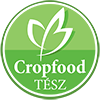With the support of our stable Hungarian producer base, this vegetable is always available in high quality in our wholesale assortment – ask us for an offer!
Beetroot is one of the most prized vegetables and has been treasured in many European countries for centuries. Its sweet, earthy flavour and bright colour brighten up not only the plate but also the diet. Its nutritional properties make it a popular choice for a wide range of dishes, from salads to soups and smoothies.
How to choose good quality beetroot?
When choosing fresh and tasty beetroot, keep the following points in mind:
- Colour: The outer colour of the beetroot should be deep reddish or purple. Avoid faded, damaged or browning pieces.
- Texture: the tuber should be firm, compact and free of soft spots. A wrinkled skin indicates that the beet has been standing for too long.
- Green: If the beetroot is still green, it should be fresh and bright green. Wilted or yellowing leaves indicate an older crop.
How to use beetroot in the kitchen?
Beetroot is a versatile ingredient that adds flavour and nutrients to many dishes:
- In salads: can be eaten raw, grated or thinly sliced. When sprinkled with lemon juice and olive oil, it makes the perfect refreshing salad.
- Cooked: it has a sweeter flavour after cooking and can be used in soups such as borsch.
- Baked: caramelizes when baked in the oven, giving it an intense, sweetish flavour. It is the perfect accompaniment to meat and fish.
- Pickled: It can also be eaten traditionally as pickled beetroot, which is a great accompaniment to stews and meat dishes.
- In smoothies: added raw or cooked to smoothies and smoothies, it adds natural sweetness and colour to drinks.
How to store beetroot?
Beetroot will keep fresh for a long time if stored properly:
- Cool, dry place: keep the beetroot in a dry, cool place, such as the pantry or the vegetable compartment of the fridge.
- Removing the green: If the green is still on the beetroot, remove it before storing, as the leaves deteriorate more quickly and draw moisture from the tuber.
- Airtight: Once the beetroot has been cooked or cut, store in an airtight container in the fridge.
Interesting facts about beetroot
- History: the cultivation of beetroot dates back to ancient Rome, where it was used not only as a food but also as a medicinal herb.
- Colouring: the deep purple colour of beetroot is due to an antioxidant called betacyanin, which has anti-inflammatory and cell-protective properties.
- Health benefits: high in iron, folate and potassium, it is particularly recommended for people with anaemia or high blood pressure.
- Natural dye: Beetroot pigments can also be used as a natural food dye to colour cakes, drinks or pasta.
Tips for using beetroot
- Peeling: the skin of the beetroot can be easily removed after cooking or baking by simply rubbing. This avoids the stains that occur when raw beets are cut up.
- Balanced flavour: If you want to soften the earthy taste of the beetroot, add lemon juice or a little balsamic vinegar during preparation.
- Quick cooking: beetroot can be cooked more quickly by slicing it thinly than by leaving it whole.
Why choose beetroot?
Not only does beetroot look good on the plate, it also has significant health benefits. Rich in antioxidants, it can support the immune system, improve circulation and help maintain energy levels. Its versatility makes it easy to incorporate into any diet, whether it’s a dietary meal or a delicious speciality.



